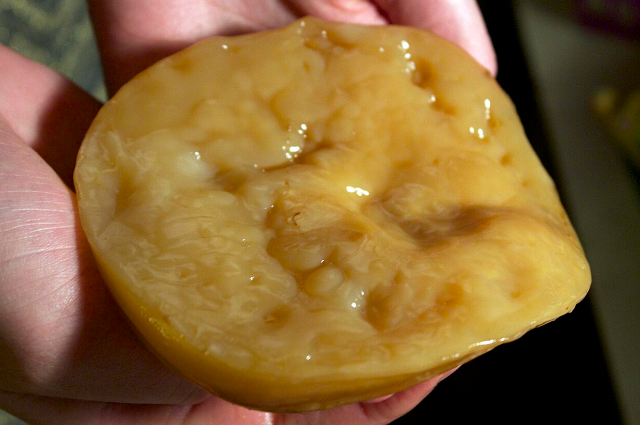
Peering into a kombucha jar, what fascinates me most isn’t just the transformation from sugary tea to tangy, fizzy drink—it’s the invisible teamwork inside the SCOBY, a living cellulose raft brimming with microbial drama. Let’s unpack what’s really going on, sparked by the latest microbiology studies, and see how different environments and species shape what you actually sip!
SCOBY: The Living Structure
First, the SCOBY itself. This thick, sometimes jiggly mat at the surface is a highly organised biofilm—mostly pure, bacteria-built cellulose with trapped water and pockets for microbial life. Its main architects are bacteria in the genus Komagataeibacter, which, using glucose, weave dense cellulose networks day and night. Komagataeibacter rhaeticus is usually the headline builder, making up as much as 64% of mapped DNA reads from large meta-SCOBY sequencing efforts. This bacterial cellulose is unlike anything from plants: it has no lignin, exhibits impressive purity, and is already being explored for things like edible films, eco-friendly packaging, and even medical applications as a dressing for wounds.
The Microbiome: Key Players and Global Variation
The latest shotgun and metabarcoding sequencing of over 100 commercial SCOBYs reveals a cast of regulars with some intriguing surprise guests. The core microbial “team”—those present in nearly every batch—consistently includes bacteria like Komagataeibacter and Acetobacter, and yeasts, mainly Brettanomyces (especially B. bruxellensis and B. anomalus), plus Zygosaccharomyces and even occasional Starmerella and Saccharomycodes.
Global meta-analyses echo this, reporting that certain taxa dominate virtually all SCOBYs regardless of their source country or starter batch. In one comprehensive study, sequencing found that Brettanomyces, Komagataeibacter, and Lactobacillus formed a consistent taxonomic “core” among hundreds of samples from every continent. Lactobacillus is especially interesting: while present everywhere, its abundance varies widely due to its tendency to inhabit either the liquid phase or the pellicle, and also because green or black tea can push its numbers up or down.
Still, when you sample from radically different climates, the subtle differences become clear. Recent research compared SCOBYs from subtropical, temperate, and cooler regions and tracked changes during fermentation. Komagataeibacter remained ubiquitous, but in subtropical batches, Gluconobacter popped up as a major adjunct. In warm, temperate SCOBYs, Dekkera yeast (another relative of Brettanomyces) dominated, while in temperate and subtropical samples, Zygosaccharomyces took over yeast duties. These core variations create distinct flavour profiles and even alter the ability to synthesise certain acids and health-active compounds.
What the Studies Show About Microbe Proportions
A 2024 global survey using shotgun and metabarcoding sequencing of SCOBYs showed that Komagataeibacter DNA typically made up over 70% of the bacterial fraction, while Brettanomyces yeast accounted for close to 80% of the fungal reads. Secondary contributors like Acetobacter (up to 11%), Gluconobacter (around 3%), and Lactobacillus (roughly 3-13% by different methods) added microbial diversity but rarely dominated.
It’s worth noting that the techniques themselves sometimes matter: shotgun sequencing tends to show Acetobacter as more abundant than do amplicon-based (16S/ITS) surveys, while Lactobacillales can look twice as plentiful in amplicon data. This highlights how subtle differences in preparation or data analysis can shift our view of the “typical” SCOBY microbiome.
Why Composition Matters: Biochemistry and Flavour
Beyond the census-taking, SCIENCE wants to know: how do these microbes affect what ends up in your glass? Komagataeibacter not only builds the cellulose mat but also churns out copious acetic and gluconic acids. In subtropical ferments, where Gluconobacter is common, finished kombucha leads in acids like acetic, succinic, and glucuronic—these are the molecules that give each batch its mouth-puckering tang and potential functional health perks.
Yeasts like Brettanomyces and Zygosaccharomyces are sugar artists: they break down sucrose first, releasing glucose and fructose, and produce ethanol along with a variety of aromatic compounds. The ethanol becomes substrate for the acid-making bacteria, so flavour development is a true handoff—that tart zing in your brew only comes after yeast gets the party started.
SCOBY-Driven Chemistry: Polyphenols and More
Across fermentation, tea polyphenols (catechins, theaflavins) are transformed by microbial enzymes. Enzyme studies show new forms rise as fermentation progresses; some even spike in content for a while (like EGC), which boosts the final antioxidant potential. The longer it ferments, the more complex the matrix of organic acids and bioactive compounds, lending each batch its own chemical fingerprint.
Some labs now trace this metabolic choreography, demonstrating, for example, how Komagataeibacter’s cellulose pellicle boosts both the local oxygen at the surface and the settlement of aerobic versus anaerobic microzones—core to getting crisp acidity without spoilage.
Worldly Diversity and the Joy of Experimentation
Glass by glass, the microbes in your kitchen are likely a little different from those a continent away, and brewing variables shape new communities every time. The broader research consensus—echoed in DNA surveys from China to North America and everywhere in between—is that while the “core” team stays the same, the minor players shift with tea choice, brewing method, local environment, and age of the SCOBY.
This means there’s no single way to make “real” kombucha: each batch is a living experiment. Curious brewers sometimes even swap water, vary tea type, or intentionally cross-breed SCOBYs to see what mutants emerge. With global research and citizen science feeding each other, there’s plenty left to discover—who knows what new flavour or material we’ll unlock next?
References:
- https://doi.org/10.3390/polym15061356
- https://doi.org/10.1038/s41598-024-77305-w
- https://doi.org/10.1016/j.crfs.2022.04.009
